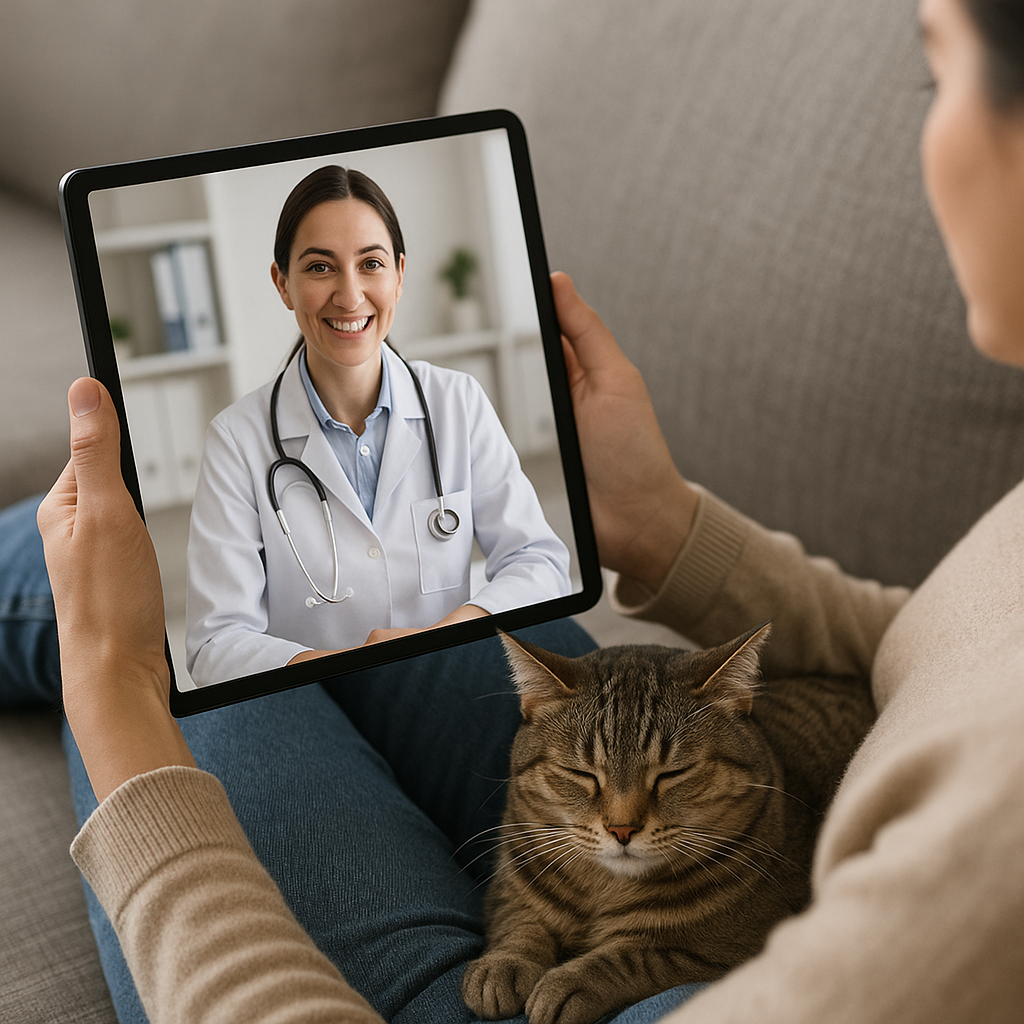Pet Telemedicine Explained: When to Use a Virtual Vet (2025 Guide)
Share
Veterinary care is evolving, and one of the most significant advancements for pet owners is the rise of telemedicine. Virtual vet consultations allow you to connect with a licensed veterinarian from the comfort of your home, offering a convenient, stress-free way to address many common health concerns. This became a vital resource during the pandemic and has since solidified its place as a crucial tool for modern pet care in 2025.
But how do you know when a virtual visit is appropriate and when you need to head to the clinic? Understanding the scope of pet telemedicine is key to using it effectively.

When to Schedule a Virtual Vet Visit:
Telemedicine is ideal for non-emergency situations where a hands-on physical exam isn't immediately required. Think of it as a first line of defense and a powerful tool for ongoing care.
- Minor Health Issues: Skin rashes, seasonal allergies, mild vomiting or diarrhea, and flea/tick advice.
- Behavioral Questions: Addressing separation anxiety, new pet socialization, or litter box problems.
- Nutritional Advice: Getting recommendations on the right diet for your pet's age and health status.
- Post-Procedure Follow-ups: Checking in after a surgery or procedure to monitor healing.
- Chronic Disease Monitoring: Managing ongoing conditions like arthritis or diabetes under a vet's guidance.
- Triage: A virtual vet can quickly help you determine if your pet's symptoms constitute a true emergency that requires an immediate in-person visit.
When an In-Person Visit is Essential:
Virtual consultations cannot replace a physical exam for serious or life-threatening conditions. Always go directly to an emergency clinic for:
- Difficulty breathing
- Severe injuries or open wounds
- Seizures or collapse
- Severe or continuous vomiting/diarrhea
- Swollen abdomen or inability to urinate
The primary benefit of telemedicine is reducing stress for you and your pet. Anxious animals can avoid a scary car ride and a crowded waiting room, and you get quick, convenient access to professional advice. To prepare for your virtual visit, find a quiet, well-lit space, take clear photos or videos of your pet's issue beforehand, and have a list of questions ready. By embracing technology, we can make pet healthcare more accessible and less stressful for everyone involved.
